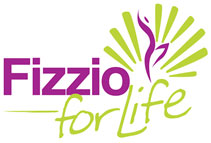Calf Muscle Strain/Tear | Achilles Tendinopathy | Achilles Tendon Rupture | Contusion/Cork | Hamstring Injury | Quadricep Pain
Calf Muscle Strain/Tear
The calf consists of 3 muscle groups, the gastrocnemius, soleus and plantaris muscles. Calf muscle sprain or tears often occur in change of direction activities.
Symptoms
- Pain and tenderness through the calf muscle bulk
- Pain with weight-bearing activities
- Pain with ankle movement
- Grade 3 – inability to actively move the ankle
- Swelling
What might a treatment plan look like?
This will vary depending on the severity of your tear, your clinical findings and individual goals. A treatment plan may look like:
- Physiotherapy treatment twice a week depending on the extent of the injury. Decreasing as able – consider 6-8 sessions over 2 months.
- Exercise physiology for targeted strength and conditioning and return to sport
- Hydrotherapy supervised by a physiotherapist or exercise physiologist may be beneficial for many lower limb injuries
Which of our team members treat calf muscle strain/tears?
- All of our physiotherapists
- All of our exercise physiologists
Achilles Tendinopathy
Achilles tendinopathy is a condition which causes pain and tenderness of the achilles tendon (the soft tissue that joins your calf muscle to your heel). It is usually an overuse injury and is common in endurance athletes.
Symptoms
- Pain and stiffness through the affected area
- Pain may settle initially with activity
- Pain at rest or at night
- Tender over the affected area
What might a treatment plan look like?
Minimum of 12 weeks-12 months healing dependant on chronicity of presentation. An example of a treatment plan might look like:
- Physiotherapy twice a week for 2-3 weeks
- Progressing to weekly appointments for a further 6-8 sessions before moving to fortnightly as pain allows
- Exercise physiology for return to sport
- Hydrotherapy supervised by a physiotherapist or exercise physiologist may be beneficial for many lower limb injuries
Which of our team members treat Achilles tendinopathy?
- All of our physiotherapists
- All of our exercise physiologists
Achilles Tendon Rupture
An Achilles rupture is characterised by partial to complete severance of the Achilles tendon from its origin at the calcaneal/heel bone. Achilles tendon rupture is more commonly seen in athletes that participate in sports that require forceful bursts of activities that include jumping, running and change of direction. To determine the extent of the rupture and ultrasound scan is conducted. Surgical intervention will most like be required.
Symptoms
- Loud snap or popping sound at point of injury
- Pain and swelling through ankle
- Minimal to no ankle active range of motion – depending on level of rupture
What might a treatment plan look like?
This will depend on whether or not surgery is required. Rehabilitation can take 3-6 months or longer depending on individual goals. A treatment plan may look like:
- Physiotherapy once a week for 2-4 weeks, followed by fortnightly appointments for another 4-6 sessions.
- You may also see an exercise physiologist later in your recovery for further strengthening, sport-specific exercises and return to sport
- Hydrotherapy supervised by a physiotherapist or exercise physiologist may be beneficial for many lower limb injuries
Which of our team members treat Achilles tendon rupture?
- All of our physiotherapists
- All of our exercise physiologists
Contusion/Cork
Coming soon…
Hamstring Strain
The hamstring muscles are very susceptible to tears and strains and are one of the most common injuries in sport. Hamstring strains are most common with sports or exercise that require a high degree of speed, power and agility such as soccer, basketball, tennis, sprinting and football.
Risk factors for hamstring strain include:
- Older age
- Previous hamstring injury
- Limited hamstring flexibility
- Increased fatigue
- Poor core stability
- Strength imbalance
- Ethnicity
- Previous calf injury
- Previous substantial knee injury
- Osteitis pubis
- Tight hip flexors
Symptoms
Symptoms vary depending on the grade/severity of the strain and which of the muscles of the hamstring group is affected.
- Minimal to severe pain in the posterior thigh
- A ’popping’ or ‘tearing’ sensation
- Swelling
- Bruising
- Numbness
- Tingling
- Weakness
- Pain
- Tenderness
What might a treatment plan look like?
- Have an initial consult with a Physiotherapist to assess the injury and create a suitable plan to return to your previous activity
- Reduce pain and improve range of movement with a combination of manual therapy and exercise prescription
- Continue gradual progression until the Physiotherapist gives the all clear to start some more challenging exercises with the Exercise Physiologists.
- Build a plan with the Exercise Physiologist to return to your previous activity and reduce the risk of future hamstring strain events.
The team at Fizzio for Life can assist in creating an exercise routine that is individualised to your capabilities and health goals while being mindful of any other health concerns you may have or you experience with exercise. It is never too late to start to work towards improved performance and better health.
Which team members work with a Hamstring strain?
Physiotherapists, Exercise Physiologists.
Quadricep Pain
Coming soon…

